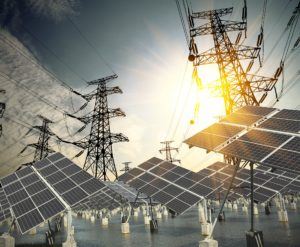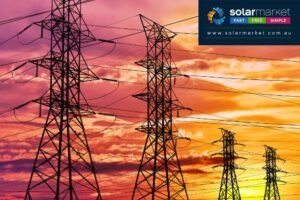A number of comments and questions we get on our Facebook page suggest that solar owners sometimes feel that they are not saving as much money as they had hoped for.
If you are feeling like you are not receiving the return on investment (ROI) you saw advertised, then here are a few pointers as to why your solar system isn’t saving you much money and how you can do a few simple things to get you saving again.
1) Shade On Your Panels
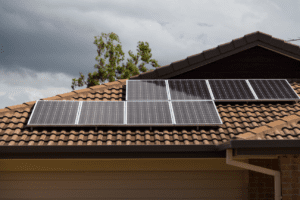
A lot of people don’t realise that if your panels get shade on them (from a tree, chimney, neighbouring house, foxtel dish, etc.) it can reduce the output of the entire system.
Naturally, shade reduces the direct sunlight on a portion of a panel but it also acts to potentially “block” the flow of power from some or all of the panels in your array.
If your panels are under-producing due to regular shade, this could definitely have an effect on how much power your system produces over time, and thereby reduce the power you can consume during the daytime.
Not all systems will have a major issue with this (some systems have components included that reduce the loss from shading), so don’t automatically assume this is the entire reason for your poor savings, BUT it’s definitely worth looking into.
Check your roof to see if there might be obvious items that cause shade (trees would be the most common) and perhaps consider whether there is some way of mitigating the shade caused.
2) Inverter faults
Faults in your solar inverter can lead to many common issues with your solar system. But how can you tell when something has gone wrong?
A simple way of checking how your inverter is performing is by looking at the glowing light during the day. If the light is green it is working as it should. If the light is red or orange something has gone wrong with the inverter and it is now showing for a fault.
If you are finding that your inverter is showing for a fault, call your installer.
3) Poor wiring
This one usually relates to a sub-standard installation job by the installers. Wiring can be cut or poorly insulated leaving them exposed to the elements.
Water damage can lead to rusting of your solar equipment and play havoc with electrical inputs and outputs.
Although bad wiring can hard to spot, a quick look around might show up some areas where the job hasn’t been done properly. Always get a qualified electrician to come onsite to check and fix issues here.
4) Increased Power Usage
Another common reason why your solar savings may be lower than expected (assuming the system is working properly and has been installed properly) is that the homeowner has increased their use of electricity.
It’s fairly common for people to start using more power once they get solar installed. They have the mindset that it’s coming free from the sun now and they don’t need to be quite as frugal with it.
The only catch here is that if you use a lot more power after getting solar than before and your system can’t produce enough spare electricity during the daytime to accommodate that, your power bills will go up.
To get an idea of what your power usage is like, go and look at your bills prior to installing solar and compare them to after you installed it.
Look at the actual number of units (kWh) consumed, not the dollar amount.
If you are seeing an increase in units consumed, then chances are this is the reason for your bills not going down very much. At least this is a simple fix – just use less power.
5) Not Using Enough Power During The Day
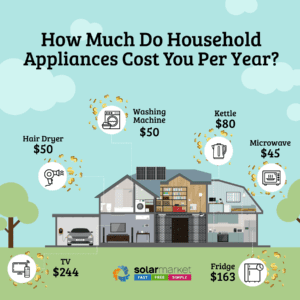 Possibly the easiest solution to increase your solar savings is to use majority of your energy during daylight hours.
Possibly the easiest solution to increase your solar savings is to use majority of your energy during daylight hours.
To get the most out of your solar system you must commit to a shift in how and when you use your energy.
Almost everyone has a fridge (or 3) running 24×7 that can’t be turned off, but what about your washing machine, clothes dryer, dish washer, pool pump, electric hot water system or garden reticulation system?
In many cases, you can put these items on a timer so they only go on during the daytime. That way, they are more likely to use the electricity from your solar panels rather than the grid, and thereby save on your power bills.
Surprisingly, some people still don’t realise that solar doesn’t work at nighttime. For 9-5 workers your energy consumption is undoubtably going to be higher during low solar output periods. Always be mindful of excess power use and try to either cut down on it or – if possible – switch it to daytime.
For tips on how to cut down on your energy use, check out our Top 5 Tips to Save Money While Working from Home blog.
6) Misreading Your Power Bill
 The other big one is that people assume the Feed In Tariff credit on their power bill is the sole extent of their savings, but in fact, the biggest component of savings come from reducing the amount of power you have to buy from your energy retailer.
The other big one is that people assume the Feed In Tariff credit on their power bill is the sole extent of their savings, but in fact, the biggest component of savings come from reducing the amount of power you have to buy from your energy retailer.
*Note that this amount is not on the bill.
You can learn more about the “hidden savings” from solar here:
The Missing Piece of The Solar Power Puzzle
7) Changes To Your Electricity Tariffs
Electricity Companies Changing Energy Rates
In some parts of Australia, adding solar to your house triggers your energy retailer to change the kind of rates (or tariffs) they charge you for your power.
Because the greedy power companies don’t like losing income (such as when you go solar and reduce the power you buy from them), they sometimes will change your electricity service from charging a rate per kWh used, to a fixed daily rate (with a small component for kWhs consumed).
This means they are jacking up the daily price before you use a single unit of electricity, in order to make more money from you. Or, they may put you on a different Time Of Use (TOU) tariff which charges more per unit of power consumed in the evenings when you are not generating free electricity from your solar system.
If you are in this situation, we recommend shopping around for a new energy retailer who is more solar friendly. Solar Market offers a nifty energy comparison tool that lets you compare, contrast and switch energy retailers all in the one place!
Changes In State Feed-In-Tariff Rates
As the years go by, feed-in-tariff rates have dropped significantly but so has the price of solar systems. As each state makes the tricky transition to renewable energy, feed-in-tariff rates vary depending on grid stability and energy demands.
8. Dirty Solar Panels
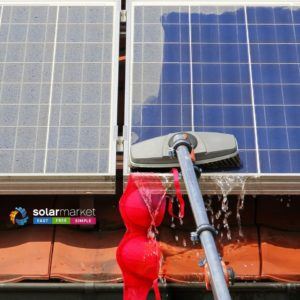 Solar panels self-clean when there is sufficient rainfall but if you have been through a dry period your solar panels may be coated in dust, bird droppings, tree sap or leaves.
Solar panels self-clean when there is sufficient rainfall but if you have been through a dry period your solar panels may be coated in dust, bird droppings, tree sap or leaves.
If you notice that your panels are dull looking and ready for a clean you can call your installer to get a cleaner out to you.
Want to do it yourself? Make sure you gently brush down the grime on your solar panels with cool water and soap. When climbing onto your roof ensure that you take the necessary safety precautions.
If You’re Still Considering Installing Solar…
If you’d like to crunch the Return On Investment numbers for solar power for your home or business, why not use our Free Solar Savings Calculator. It will give you some ball-park figures of how quickly solar will pay for itself for you, and ultimately how much money it will save you over its lifetime.
Alternatively, if you’d like to get 3 free quotes for solar power for your own home or business, just fill in the quote form below (it only takes 30 seconds) to get the process started, and you’ll be contacted by 3 local installers ASAP to provide a fully customised no-obligation quote for solar.
-
- Updated Oct 2020

